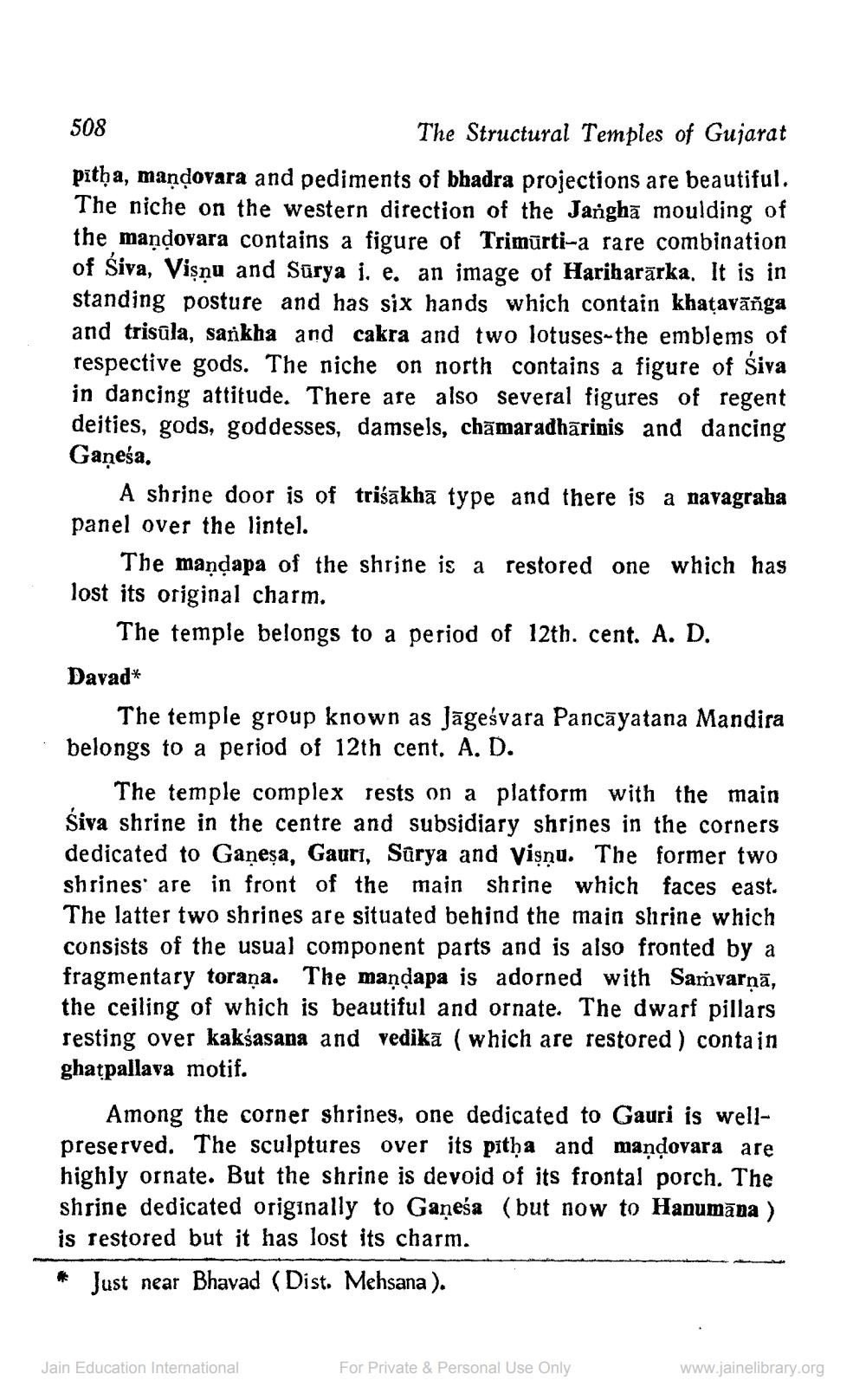________________
508
The Structural Temples of Gujarat pitha, mandovara and pediments of bhadra projections are beautiful. The niche on the western direction of the Jarghā moulding of the maņdovara contains a figure of Trimūrti-a rare combination of Siva, Vişnu and Sarya i. e. an image of Hariharārka. It is in standing posture and has six hands which contain khatavāñga and trisula, sankha and cakra and two lotuses-the emblems of respective gods. The niche on north contains a figure of Siva in dancing attitude. There are also several figures of regent deities, gods, goddesses, damsels, chamaradhārinis and dancing Gaņeśa.
A shrine door is of trišākhā type and there is a navagraha panel over the lintel.
The maņdapa of the shrine is a restored one which has lost its original charm.
The temple belongs to a period of 12th. cent. A. D.
Davad*
The temple group known as Jāgeśvara Pancāyatana Mandira belongs to a period of 12th cent. A. D.
The temple complex rests on a platform with the main Siva shrine in the centre and subsidiary shrines in the corners dedicated to Gaņeșa, Gauri, Sürya and Visņu. The former two shrines are in front of the main shrine which faces east. The latter two shrines are situated behind the main shrine which consists of the usual component parts and is also fronted by a fragmentary torana. The maņdapa is adorned with Samvarņā, the ceiling of which is beautiful and ornate. The dwarf pillars resting over kakśasana and vedikā ( which are restored ) contain ghatpallava motif.
Among the corner shrines, one dedicated to Gauri is wellpreserved. The sculptures over its pitha and maņqovara are highly ornate. But the shrine is devoid of its frontal porch. The shrine dedicated originally to Gaņeśa (but now to Hanumāna ) is restored but it has lost its charm. * Just near Bhavad (Dist. Mehsana).
Jain Education International
For Private & Personal Use Only
www.jainelibrary.org




